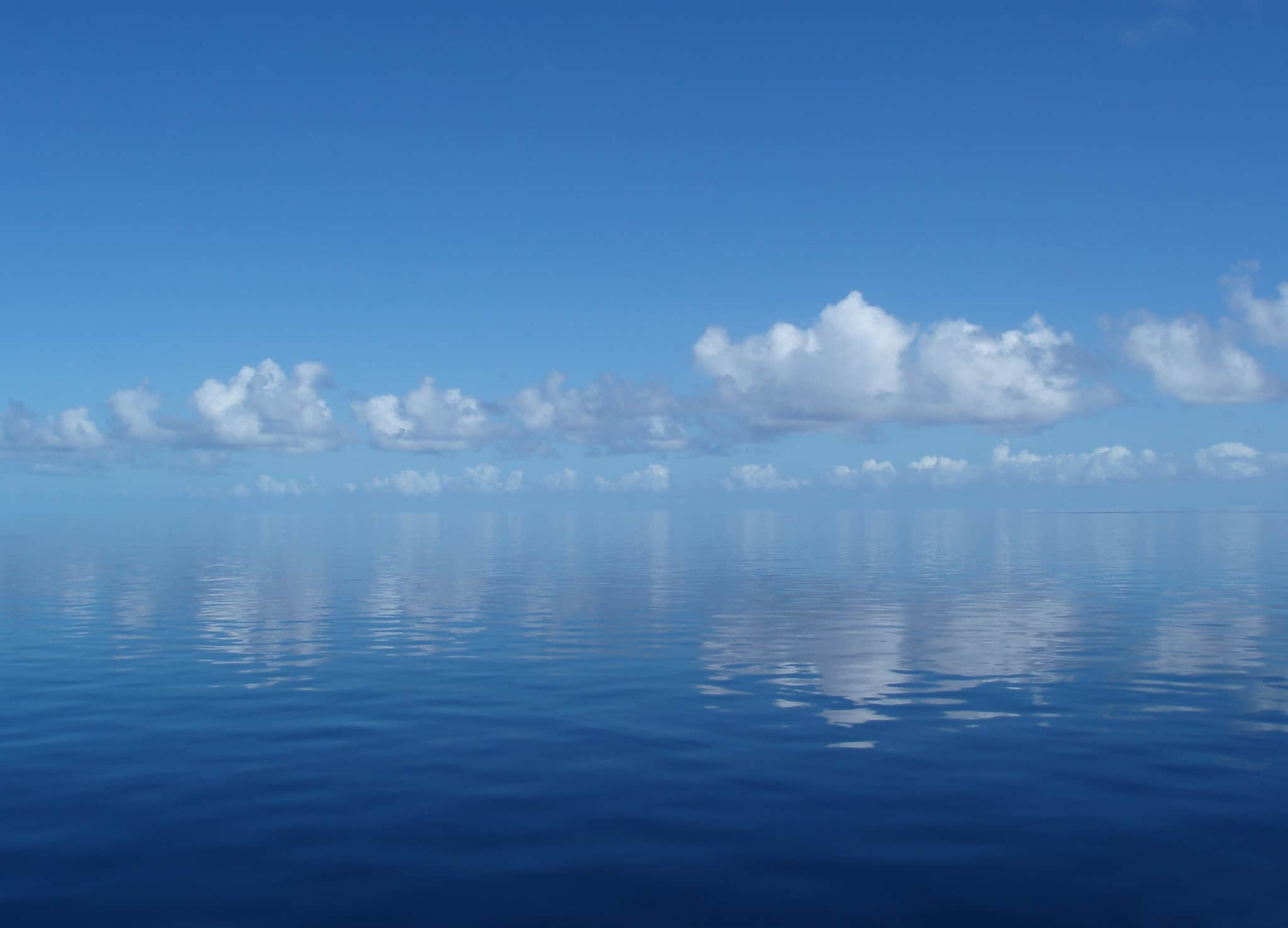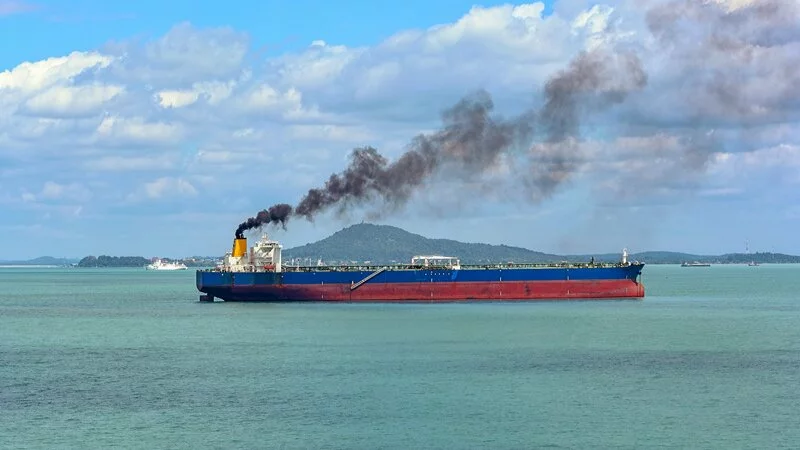
Reducing CO2 emissions
ARTICLE
Reducing CO2 emissions across operations is a clear goal for many businesses today. The climate is changing, and this is having significant and visible effects on nature, animal life and humanity.
Although shipping is the most energy-efficient method for moving cargo over long distances, the sheer size of the industry means that marine vessels have a significant impact on the climate.
This article puts a different and slightly overlooked perspective on engine emissions and cylinder lubrication as facilitator of lower vessel emissions.
Understanding vessel CO2 emissions
Air pollution from ships is generated by diesel engines as they burn fossil fuel oil, also known as bunker oil. This produces sulfur dioxide, nitrogen oxide and particulates, in addition to carbon monoxide, carbon dioxide (CO2), and hydrocarbons – these form aerosols, HCHO and other products that can deplete the ozone through secondary chemical reactions.
It is estimated that shipping is responsible for approximately 3% of global CO2 emissions alone. This is expected to increase in the coming years if no actions are taken.

Tougher legislation
The International Maritime Organization (IMO) is the United Nations agency responsible for the safety and legislation of shipping.
The 2023 IMO GHG Strategy sets a framework for member states through which to reduce the carbon intensity of international shipping, with a target of at least 40% reduction by 2030 from the 2008 baseline.
As a stimulus to lowering emissions, vessels are required to calculate two ratings: their attained Energy Efficiency Existing Ship Index (EEXI) to determine their energy efficiency, and their annual operational Carbon Intensity Indicator (CII) and associated CII rating – a new measure for 2024.
Carbon intensity looks at greenhouse gas emissions in relation to the amount of cargo carried over distance travelled. The rating indicates a major superior, minor superior, moderate, minor inferior, or inferior performance level.
Particulate emissions also contribute to climate change and air pollution, and voices within the industry expect more legislation around this soon.
Strategies for lowering vessel emissions
As a stimulus to lowering emissions, vessels are required to calculate two ratings: their
Vessels can improve their CII rating through various measures – often in combination. The most common being:
- Slow speed and weather routing
- Hull cleaning and re-paint to reduce drag
- Installing a scrubber for cleaning exhaust gasses
- Installing rotor sails
In parallel, engine makers have intensified development of dual-fuel engines able to run on greener alternative fuels such as methanol and ammonia. The first vessels with dual-fuel engines were introduced in early 2024.
Cylinder lubrication is less recognized as a measure for reducing vessel CO2 emissions because the percentage of emissions originating from the lubrication oil is a lot lower compared to that of the fossil fuel oil. However, the role of cylinder lubrication should not be overlooked.
Lubrication can lower emissions
Advanced cylinder lubrication technology can lower emissions indirectly by reducing lube oil consumption during engine operation. A CIMAC paper stated that, in many cases, consumption on an individual engine can be lowered by 50% without any trade-off in liner wear rate.
The paper also stated:
“A high lubrication oil dosage is not just a matter of increased costs; it is just as well a matter of environmental considerations as engine smoke formation and oil sludge production is naturally increased with the cylinder oil consumption.“
This means that by lowering lube oil consumption – CO2 and particulate emissions drop. The paper presumed that many marine vessels are over lubricating, creating unnecessarily high emissions, high operational costs and decreased cylinder conditions.
Case study:
BW Group tanker reduces cylinder wear and emissions
A tanker was struggling with higher-than-normal cylinder wear and the crew had been trying all they could to locate the cause. The problem affected both vessel efficiency and profitability – it had to be solved6.
The engine was a MAN 6S50ME-B running on BN40 cylinder oil. Initial discussions between HJL and BW’s technical department soon led to closer investigations into the cylinder lubrication.
Piston rings showed clear signs of scratches and wear, deposits were visible on piston lands, and the liner showed signs of scuffing.
New lubrication solution
The project team decided to upgrade the cylinder lubrication system to HJ Lubtronic 2.0 with SIP valves7.
The upgrade has been a success. After just two years, linear wear rate has fallen by almost 80% – from 0.13 to 0.028 mm/1000 running hours. The feed rate has also fallen from 1.17 to 0.7 g/kWh, which is close to a 40% reduction in lube oil consumption.
Hafnia noted that after the upgrade, “BW Egret” is the engine with the lowest cylinder oil feed rate amongst all the sister vessels.Thanks to the upgrade, CO2 emissions dropped 38 ton/year and particle emissions by 1.69 ton/year.
Significant lower particle emissions
Most of the particulate emissions from cylinder combustion originates from the lube oil, so lowering lubrication oil consumption significantly reduced emissions.
Conclusion
The marine industry is undergoing many changes due to green legislation, creating challenges for shipowners and technical managers. Staying ahead of the race to decarbonize means making quick decisions on climate-friendly technologies, often with little guarantee of actual effect, all while maintaining effective operations and securing investments.
Cylinder lubrication has typically been considered of minor importance in a green context, but now there are more benefits than ever to upgrading. And while legislation focuses on CO2, engine exhausts contain other polluting greenhouse gases and particulates that an upgraded lubrication system can address.
Efficient lubrication is therefore a three-way win:
> Lower lube oil consumption reduces particulate and CO2 emissions
> Lower lube oil consumption improves vessel OPEX
> Flexible lubrication technology safeguards cylinder condition
You can book a customized savings and emissions calculation on your specific vessel by one of our representatives.